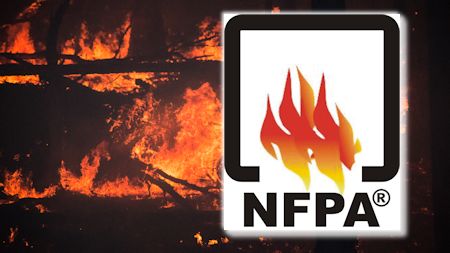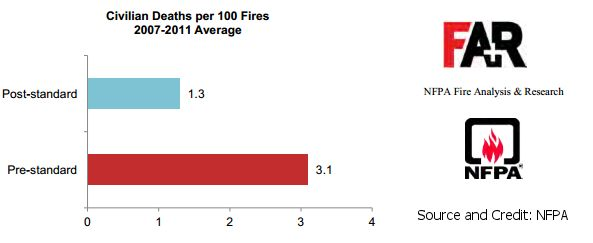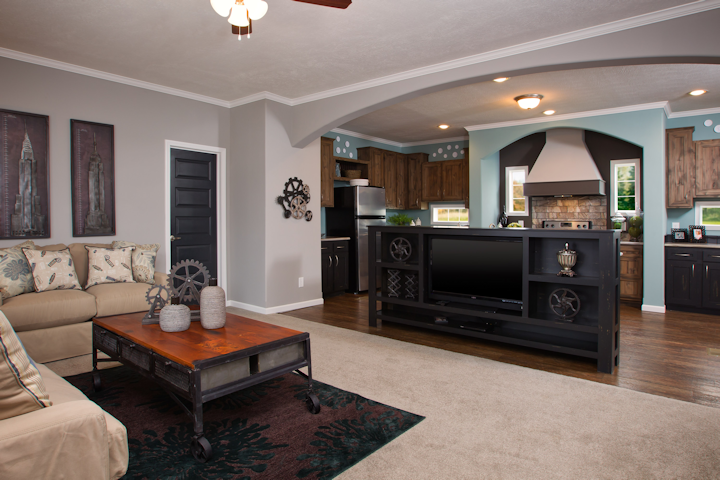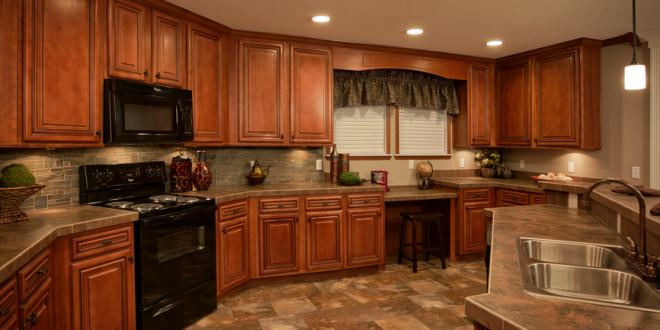I’m sure you have heard the myth that manufactured homes are more prone to fires and cause more deaths and injuries than fires associated with traditional “site built” homes. While pre-HUD Code “mobile homes” did have such a reputation, it is a myth that it applies for modern manufactured homes. It may come as a shock, but today’s modern manufactured homes are safer than old mobile homes and are actually safer than traditional “site built” homes.
Who says?
The National Fire Prevention Association (NFPB) did a study and created a report in 2013 to specifically address fires associated with pre-HUD Code mobile homes and post-HUD Code manufactured homes, then compared them to other 1-2 family dwellings. The results of this report shine a light on the quality and safety of today’s manufactured home industry. The NFPA study proves the forward movement that the industry is taking in providing quality, safe homes for the public.
The major thrust forward began after June 15, 1976.
“In 1976, the U.S. Department of Housing and Urban Development (HUD) took jurisdiction over construction standards for manufactured homes. Therefore, pre-1976 and post-1976 manufactured homes are referred to as pre-standard and post-standard manufactured homes, respectively.“
The introduction of the HUD Standards moved the previous ‘mobile home industry’ into the dawn of the modern manufactured home era.
While the standards are too numerous to mention, the idea of increased safety and efficiency is echoed throughout. Mandatory smoke detectors installed in all new units certainly has played a role in the decrease in fire related deaths and injuries.
“The introduction of the HUD standards was associated with a drop in the rate of fires per 1,000 manufactured homes (from 2.3 for all pre-1975 manufactured home to 1.5 for all 1975 and newer manufactured homes). There is no evidence that unit age in general is associated with higher rates of fires per thousand manufactured homes.“
The NFPA graphic shows that pre-HUD Code Mobile Homes are 2 ½
times more likely to have a death per 100 fires than a modern manufactured home.
When you take mobile homes out of the statistics, manufactured homes are safer
against a fire and have fewer deaths per incident than conventional homes.
To have an accurate idea as to what qualifies as a manufactured home, we look to the standards as outlined in the report.
“A manufactured home is not a motor home or trailer, and although it is often called a “mobile home,” it is not that either. “
“A manufactured home is a structure built on a chassis and designed to be towed by a vehicle to a permanent or semi-permanent site, where it will be used as a single-family residence. (Similar structures can be used for other purposes, such as temporary offices, but such uses are excluded from the definitions and statistics here.) Manufactured homes are no longer called “mobile homes” by the industry to avoid confusion with motor homes or travel or camping trailers, which are designed for routine relocation from place to place. These properties have their own codes in the national fire incident data bases.”
Manufactured homes also should not be confused with modular or prefabricated homes, where major components of a home are manufactured as units off-site, then assembled on-site, where they are subject to the regulations of the local authority.”
To put some perspective on these facts, we need to look at similar structures, namely the 1-2 family home, apartment, or condo.
“Manufactured homes have roughly the same civilian fire death rate per 100,000 occupied housing units as other one- or two-family homes… (Editor’s Note, this is only when mobile homes are included, see below). The death rate for manufactured homes (3.0) is at the upper end of the range of estimated death rate for other one- or two-family homes (2.7-3.0). The range is necessary because readily available data on housing units combine all housing with 2-4 units in one-group.”
There is a range for one- or two-family homes other than manufactured homes. The high end of this range includes and the low end excludes housing units in two- to four-family buildings, because two-family dwellings are not shown separately, and so one must either include or exclude all two- to four-family dwellings.
Manufactured homes show a lower rate of fires per 1,000 occupied housing units, offsetting a higher rate of deaths per 100 fires. Manufactured homes have a lower rate of civilian fire injuries per 100,000 occupied housing units than other one- or two-family homes, because manufactured homes have not only a lower fire rate per 1,000 housing units but also a lower injury rate per 100 fires.”
While this information paints the modern manufactured home in a similar light to other types of 1-2 family buildings, this information is actually not the complete picture.
Roughly 20% of all manufactured homes currently occupied are pre-standard homes. Since no pre-standard homes are being sold new anymore, each year that percentage is dropping. With it, too, is the death rate associated with such factory built homes. If we exclude pre-standard homes from the numbers, we see quite a different picture of the industry.
“If all pre-HUD-standard manufactured homes were removed from the inventory, the fire death rate per 100,000 occupied manufactured homes would be estimated at 1.9, or well below the range estimated for the rate for other one- or two-family homes.”
The 1.9 estimate is drastically lower than other 1-2 family dwelling rating of 2.7-3.0. This number could actually be even lower if occupants would stop modifying safety devices.
“Smoke alarms reportedly are missing in half (51%) of all 2007-2011 manufactured home fires where smoke alarm status was reported. Because all post-standard manufactured homes are required to be sold with smoke alarms installed, this implies a disturbingly high rate of smoke alarm removal by occupants.”
In conclusion, you can rest easy knowing that your modern manufactured home is built to the latest federal standards and is statistically safer than traditional “site built” homes.
To view the complete report, click the link here. ##

 manufacturedhomelivingnews.com Manufactured Home Living News
manufacturedhomelivingnews.com Manufactured Home Living News


































